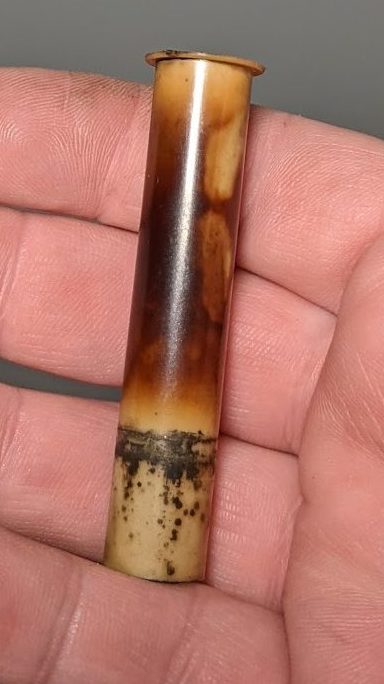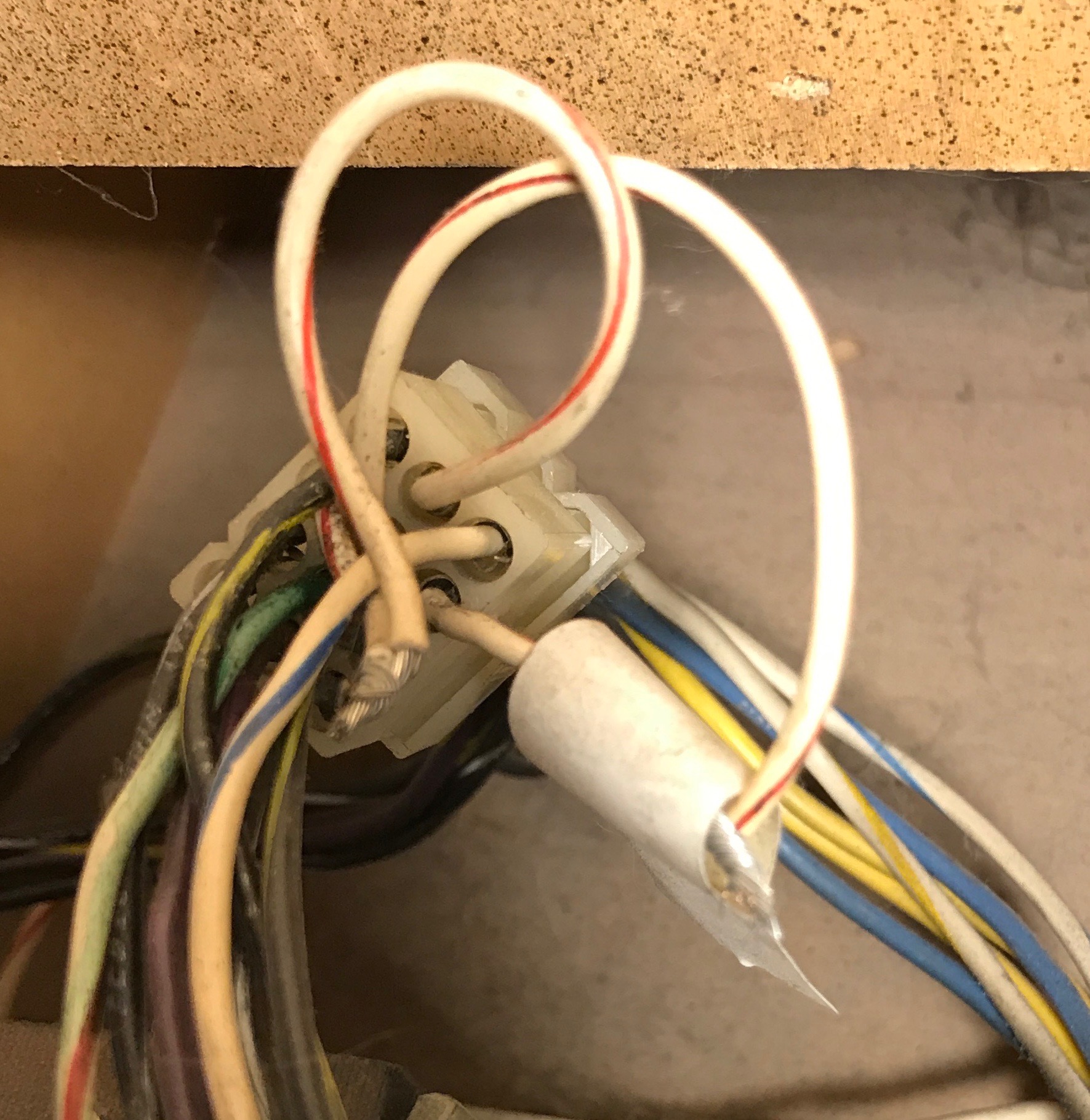A few years (!) ago I bought a Spy Hunter. It played blind.
I got this game as a sweetheart deal, and I got a great price because it wasn’t working. It belonged to a friend who used it for party rentals. I knew it had been well maintained. Must be a loose wire or a fuse or something.
I talked to Chris, who said that if I pulled the boards apart, everything would work until the game got moved. Well that sounded pretty annoying. So, as I am wont to do, I bought some parts—in this case, a set of new interconnect cables—and put them in the cash box for some other day.
Well, that day was in late 2019, when I conned GMike and I into taking a look at it. Still no video, and no obvious reason for no video. So we replaced the interconnect cables. This is a pretty large pain in the ass, because the MCR III system is such a convolution. Power comes in one end of the board stack, I/O comes in the other end, and all the spring tension on the connectors is so tight, they’re nearly impossible to take apart.
GMike and I got the boards apart on the dining room table, cables replaced, back together—same thing. I texted the previous owner and got the scope out and handed it to Mike, who confirmed the video pins weren’t videoing. I have a pattern generator for the monitor, which proved it was OK. The text conversation went back and forth a few times until I realized the video signals weren’t connected to the CPU, but to the Super Sound I/O board which, for some reason, has a connector with exactly the same connector as the CPU.
So we moved the connector over and played some Spy Hunter.
Next problem: bad power switch. I think it had just mechanically failed and wouldn’t stay off. Unfortunately we had to change the QD connectors from .25 to .187, but they work just as well.
Last problem: no saved settings. There are two types of difficulty setting in Spy Hunter. One is DIP switches and controls how long the “unlimited cars” time is. The other is in software, and coincidentally, also saves high scores and bookkeeping.
The battery had long since been replaced with a supercapacitor. But when the power was shut off, whether or not the card rack was connected to the power supply, the available voltage dropped to nothing quickly. So, GMike put a new cap in it. That would at least hold voltage with the power off. But with the boards connected, voltage would drop.
Chris suggested replacing the 6116 on the CPU, or the capacitor and diode on the power supply related to the battery. I had the cap and diode, so I replaced them. I would have done the 6116, but it’s so difficult to get the card rack out, I put it off. I got some 6116s from Chris on a visit to his shop, and actually ordered an NVRAM so that I’d only have to go at this once.
Tonight, though, rather than put the NVRAM in, I wanted to get the 6116 to work. It’s so difficult to get the ribbon cables off, I stopped trying, and learned to work with the boards connected (very carefully). Actually, the Spy Hunter is in the garage, and the available low-static workspace I had was a pinball machine in the house, so I just took it inside. Where it’s warm.
I got the stack apart and couldn’t find the 6116 on the CPU board. So I looked around and saw that it’s actually on the video board. I put in a new chip, and no change. (OK, one change: the video connector is so hard to get on, I missed pins and corrupted the video. Other than my heart breaking that I just broke the game, no problem.)
So I put the NVRAM in. It barely fit in the stack. Plugged it back in, and the sprites were either missing entirely or corrupt. Uhoh. Had I changed the wrong 6116? Yep. The correct 6116 to change is on the CPU board, at 5G, and this was documented by the vendor. I had missed it because the original chip had a weird part number. So, on my third reassembly of the day, I put the right chip in and reinstalled, and things appear to be working!
(So I can’t really say that the NVRAM didn’t fit. I mean, if you put it in the wrong place, it doesn’t fit. That isn’t helpful. However, the NVRAM will not work as video RAM. That’s also not helpful but is something of a fun fact. I guess.)
I finally increased the difficulty from default 3 up to maximum 9. It’s a more interesting game. At 3, there are a lot of times where there are no spy cars to attack. At 9, there are spies almost all the time. It’s great.
I re-checked the voltage, and with the power off, it stayed around 4.80, a big change from the various broken parts. So far, the cap appears to be working.

